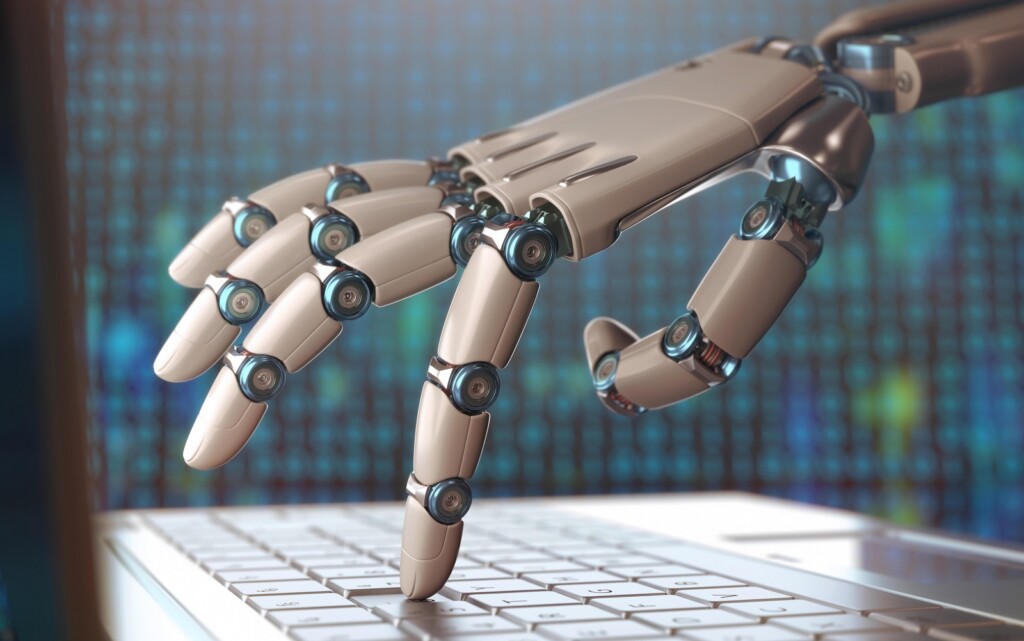
AI Myths: What is AI Really?
It would be surprising if there were any people on planet Earth today who hasn't at least heard the phrase “Artificial Intelligence”. The most likely place to first hear this term is in fiction. Books featuring robots or super-intelligent computers have always been popular. Unfortunately, it also means that what a lot of people think artificial intelligence “AI” is doesn’t match up to reality. They are simply AI Myths.
Public misunderstanding of AI was never really a huge issue until recently. That’s because artificial intelligence and its offshoot technologies are starting to have an impact on our daily lives. We are at the start of an AI revolution which will change just about every aspect of life. From your job to medical care and everything in between. Some form of AI technology will be in play.
The same goes for cybersecurity and privacy. AI-based tools are already an eminent threat to our privacy. That’s a problem today, not at some vague point in the future. There are so many positive and negative applications for AI technology in the cybersecurity realm alone that it boggles the mind.
What is AI?
This is the big question. AI is a term that gets thrown around a lot, but few people really know what it means. The most important part of the term to understand is intelligence. While most of us can recognize intelligence in other people and other living creatures, you may be surprised to know that there is no clear-cut, universal definition of intelligence that everyone can agree on.
Human intelligence is the product of many complex abilities and factors. When you encounter a problem in real life, you’ll draw on your knowledge to understand what your senses are telling you. Then you might imagine several ways to solve the problem. Perhaps you’ll try a few ideas until you find one that works. If you do solve the problem, you’ll learn from it and solve other similar problems more easily in the future.
If you think about what human intelligence does, you’ll get a better idea of what it is. Learning, planning, trial and error, prediction and more goes into the larger category of intelligence.
So in broad terms, the point of Artificial Intelligence is to get machines to do the same sorts of things that natural intelligence does. To create machines that can learn, solve new problems they’ve never encountered before.
Strong and Weak AI
AI falls into two broad categories. Strong AI is artificial intelligence that equals or exceeds that of a human being. Weak AI is an intelligent machine solution that’s very, very good at just a few things. A piece of software that can beat a human chess grandmaster is an example of weak AI. Jarvis from Iron Man is an example of Strong AI. Strong AI is also referred to as General AI and weak AI, in turn, is also known as Narrow AI. So you should have a decent idea of how these polar opposites fit into the overall AI puzzle.
The only real AI that exists today is narrow AI, so when we speak of the capabilities of AI it's to this specific, limited type that’s under discussion.
What Can AI Do Today?
Quite a lot actually and often AI is applied in ways that are completely invisible to us. One of the most common applications of AI that you’ve probably encountered is machine learning. This discipline is a part of the AI field and has many applications. Broadly it's a method to build analytical models. In other words, machine learning can automatically build models that help a computer efficiently solve future problems.
This is a big deal because it turns out that trying to write a program to do things like recognize a face or drive a car is basically impossible. So instead, we’ve created software that learns how to do these things instead.
When you use voice recognition, face unlocks or use autopilot in a Tesla car, you’re making use of something created through machine learning. AI is also being used in just about every field out there. For example, machine learning software can diagnose skin cancer as well as a trained dermatologist now.
There is, of course, a dark side to this is as well. One recent example is the creation of Deepfakes. This is where machine learning technology can realistically replace the face of someone in a video with another. It’s already good enough to fool many people and the scope for misuse is serious.
What CAN’T AI Do Today?
While AI is certainly going to replace many of the things human labor is used for today, it can’t replace people entirely. Take the problem of self-driving cars. The cutting edge, AI-powered solutions of today are tantalizingly close to being fully autonomous. Yet they don’t have a fraction of the problem-solving ability that a human has. As long as everything they encounter on the road falls within the normal range of events a driver has to handle, things look good. Throw something completely out of the left-field into the mix and unexpected things can happen. So we may have self-driving cars that can almost act independently soon, but true independent driving AI might be decades away.
AI Myths Tougher to Kill Than Skynet
There are many myths that surround the “mysterious” field of Artificial Intelligence. Too many to list or discuss in an article like this one. However, there are three which I think are especially pervasive and emblematic of how misguided the discussions surrounding this exciting field has become. Let’s deal with each one in turn.
Myth 1: AI Will Take Over the World
This is something a lot of people believe and probably the one myth most directly fueled by fiction. First of all, is this a theoretical possibility? Absolutely yes. If we ever do create or kick-start true superhuman machine intelligence, then, of course, there’s a possibility that they will replace humanity with their own progeny.
So this is a myth not in the sense that it is impossible, but in that it’s not a terribly realistic fear. It also assumes that the people who are working on advancing the field of AI are morons who don’t understand the actual risks of their work. Safety and risk when it comes to AI is a hot area of research and safety measures are being built into them.
Of course, AI is taking over the world in a different sense. Since technology is so useful, it seems likely that it will be implemented in just about every walk of life.
Myth 2: Strong AI is Inevitable
Strong AI, AI that’s as good or better than human intelligence, does not exist. Will that always be a case? Well, we know that human-level intelligence can be created because we exist. Yes, we are the product of natural processes, but we are material beings operating within the laws of physics. So humans are proof of the sort of intelligence that can be supported in this universe.
Now, does that mean that we will inevitably crack the problem of how to create strong AI? There’s no reason to think so. While it feels good to think of human civilization as something that will solve the mysteries of the universe and master the material realm, it’s just wishful thinking. We have absolutely no idea how to create strong AI. We don’t even know how our own brains and minds work. We’ve made amazing progress in understanding our own intelligence and biology, but even if we figure it all out that doesn’t translate to strong AI.
The biggest logical disconnect in this myth is the idea that developing a narrow AI will eventually lead to strong AI. While it might be true that as narrow AI advances it will become the strong variant, we have no reason to think so.
Myth 3: AI is Completely Safe
There’s a counterpoint to all of the above as well. The idea that AI technology is completely safe is also a myth. It turns out that dealing in absolutes doesn’t put you in a strong position, which is also true for people pushing AI as a panacea that can never be harmful.
Now, there are degrees of harm here. Those on the doomsday apocalypse side of the AI debate are often worried about “rogue” AI. Artificial Intelligence i.e. no longer taking orders and act on their own. We can file that under the same hypothetical category as the emergence of Strong AI itself.
The true danger of AI comes from how we, as its creators, choose to use it. If there are going to be killer robots, you can bet it will be a human giving the orders. The same goes for things like privacy invasion and government oppression. AI technology can be applied to enable all of these things.
AI Myths in Perspective
A long history of fictional AI alarmism and general public misunderstanding of the technology that underpins Artificial Intelligence makes the proliferation of myths understandable. There’s also a lot of real issues to be worried about, but the media doesn’t always do a good job of explaining why certain AI technologies can be abused or why we should worry about them as a society.
Having a more realistic idea of the state of the art is important. We’re moving into a world that will see people interacting with AI all the time. Automation is coming with great speed and more and more decisions are going to be made with the help of AI. There’s no escaping the seemingly limitless potential of this technological revolution.
What's an AI myth you can debunk? Let us know down below in the comments. Lastly, we’d like to ask you to share this article online. And don’t forget that you can follow TechNadu on Facebook and Twitter. Thanks!














